Infrastructure Business Area
While Ensuring Stable Operation of Infrastructure That Supports Society and Advancing Carbon Neutrality, We Contribute to Security in Japan and across Asia
The Infrastructure Business Area comprises the public utility systems business, energy systems business, and defense & space systems business.
Realizing a Society with Rich Water Cycle
Ozone Generator
Ozone is used in advanced water purification and pulp bleaching due to its powerful sterilizing, deodorizing, decolorizing, and oxidizing properties. Mitsubishi Electric’s ozone generators leverage proprietary technology to achieve high efficiency, high concentration, and compact design. Widely utilized in advanced treatment of both drinking and wastewater—as well as in general industrial applications—they contribute to the realization of a rich water environment by improving water quality in Japan and abroad.
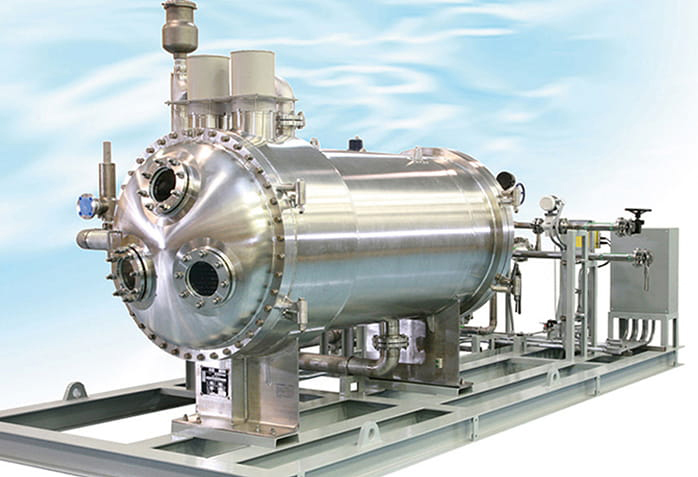 Ozone Generator
Ozone Generator
Related link
Helping to Create Safe, Secure and Comfortable Cities
Network camera systems
Network camera systems are not only capable of video recording and monitoring, but they are also expanding their applications with AI and image analysis technology to improving safety through early detection of suspicious objects, creating comfortable spaces by detecting congestion levels and traffic flows, and prevention and mitigation of disasters. We manufacture products such as the MELOOK series, which meets diverse requirements, as well as other products that are ideal for the surveillance of large, open areas such as public facilities, thereby contributing to the development of safe and secure cities.
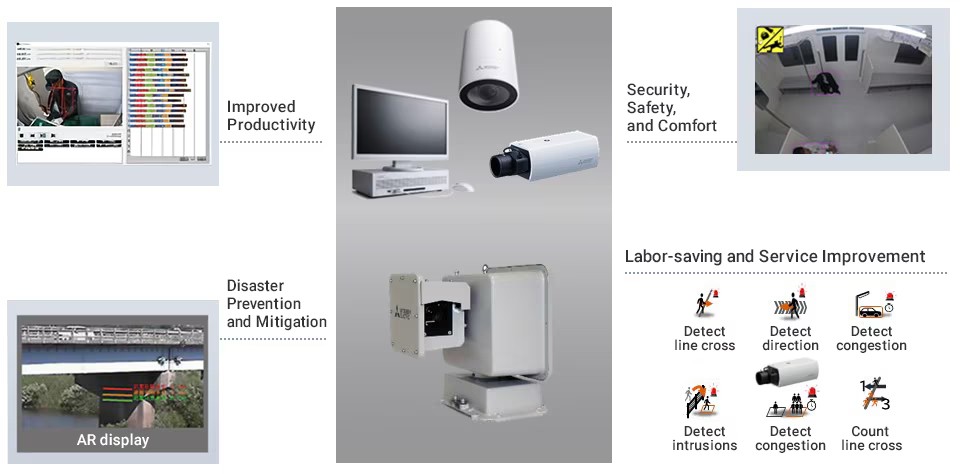 Network camera system
Network camera system
Related link
Contributing to a Decarbonized Society
Railway Data Analysis Service Utilizing Serendie Digital Platform
Mitsubishi Electric offers a railway data analysis service that leverages its proprietary Serendie digital platform to combine and analyze data such as power consumption of train vehicles, substations, and stations, as well as train operation status. This service contributes to the optimization of energy management by integrating railway assets—including vehicles, substations, and stations—with energy-efficient train operations. Furthermore, by analyzing and utilizing data collected from railway operations and supporting coordination with power systems in surrounding areas, the service helps optimize energy supply across entire railway corridors and contributes to the realization of carbon neutrality.
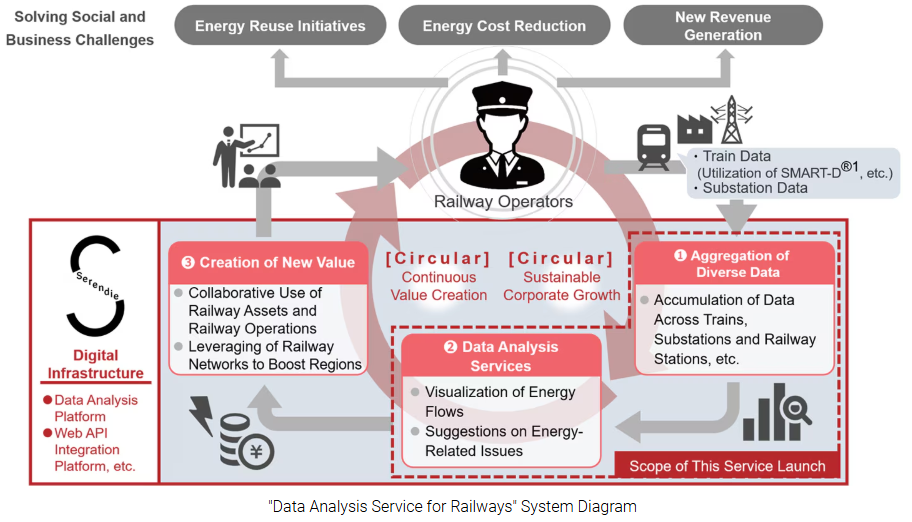 Railway Data Analysis Service Utilizing Serendie Digital Platform
Railway Data Analysis Service Utilizing Serendie Digital Platform
Related link
Environmentally Friendly Greenhouse Gas-Free Switchgears
Switchgears installed in substations serve to reroute transmission paths and protect the grid from overcurrent during accidents. Many conventional switchgears use SF6 gas, which has a global warming potential approximately 24,300 times greater than CO2. In response to growing demands for reduced environmental impact and regulatory restrictions on SF6 gas usage across various countries, Mitsubishi Electric has developed switchgears that do not rely on SF6 and has successfully received its first order. We will continue to expand our lineup of greenhouse gas-free products, contributing to the realization of a carbon-neutral society.
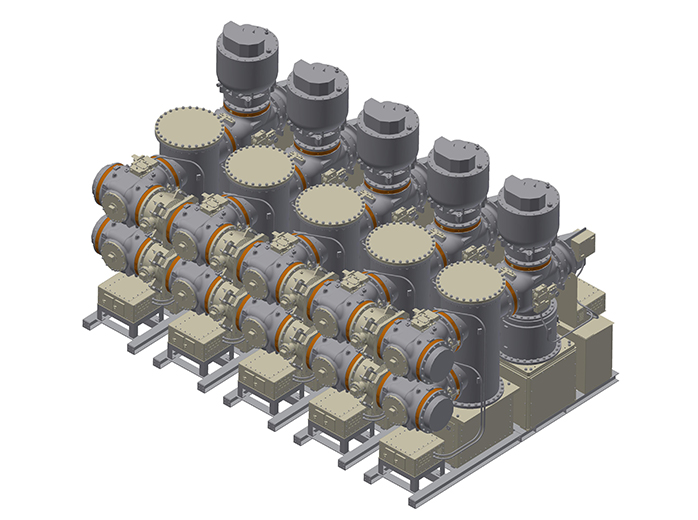 84kV Dry Air Insulated Switchgear
84kV Dry Air Insulated Switchgear
Related link
Contributing to the Introduction of Clean Energy
Direct Current (DC) Transmission and Distribution Technologies
Suitable locations for renewable energy generation, such as wind and solar power plants, are often situated far from areas of electricity consumption. As a result, energy losses occur during transmission due to frequency and voltage conversion, as well as transmission distance itself. One approach to reducing these losses and enabling stable, efficient use of electricity is DC transmission and distribution technology. Mitsubishi Electric is deploying high-voltage direct current (HVDC) transmission systems, along with its Diamond-Smart Medium voltage direct current distribution network system (D-SMiree), which supports local production and consumption of electricity. The Company is also developing DC circuit breakers to protect power grids. Through these DC technologies, Mitsubishi Electric contributes to the broader adoption of renewable energy and the realization of carbon neutrality.
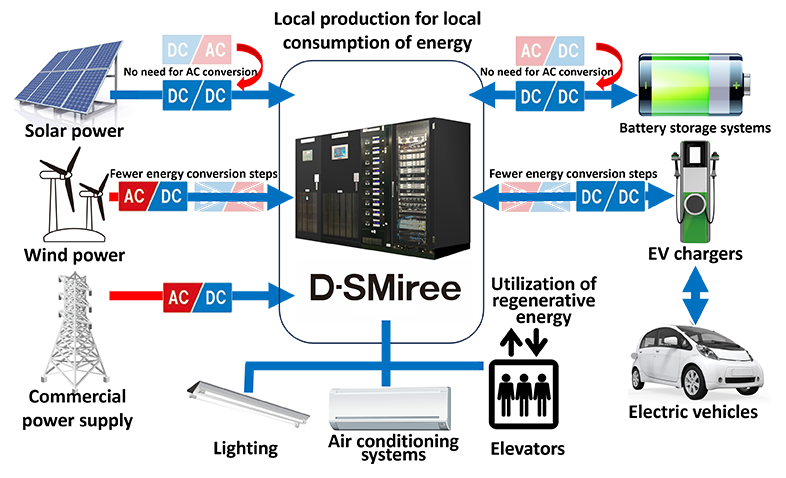 D-SMiree
D-SMiree
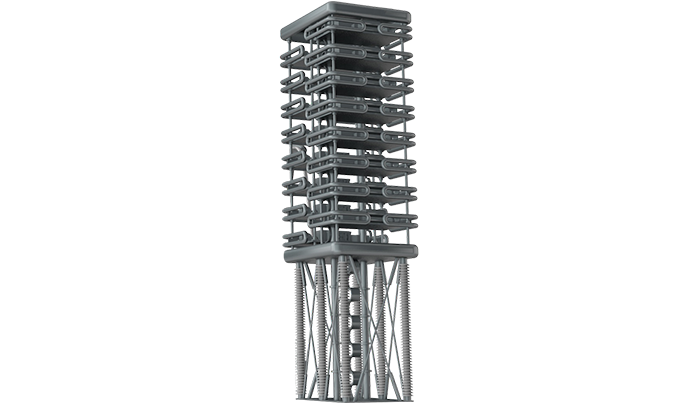 DC Circuit Breaker
DC Circuit Breaker
Related link
Contributing to the Optimal Use of Energy
BLEnDer Series Software Package for the Electric Power Market
As renewable energy sources such as solar and wind power, along with storage batteries, become more widespread, the power network is undergoing significant transformation. BLEnDer harnesses ICT to visualize and control electricity flows, while supporting efficient power trading. Mitsubishi Electric remains committed to responding to shifts in the power market and evolving energy trends, supporting both stable electricity supply and efficient energy management.
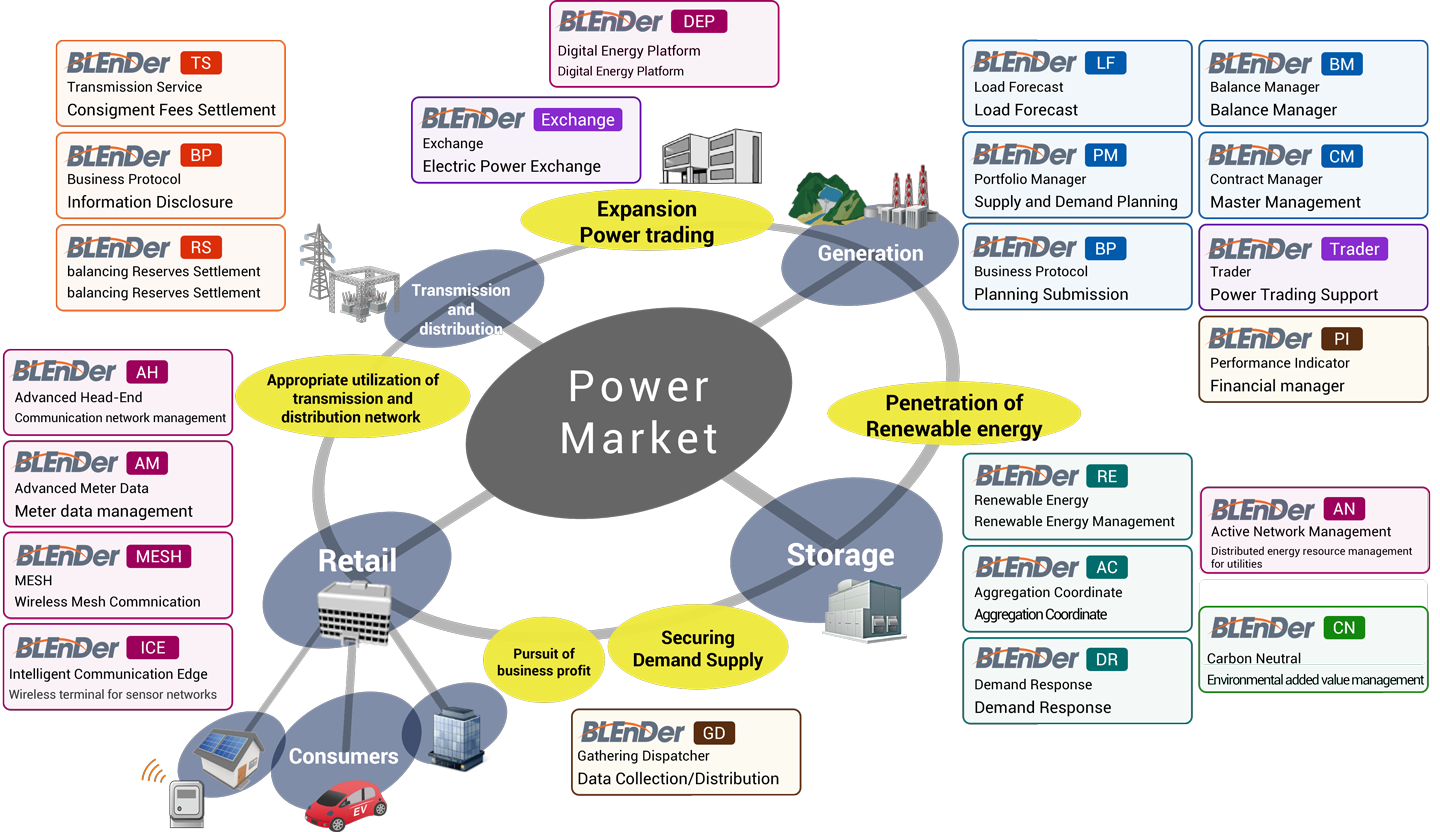
Related link
Contributing to the Resolution of Social Challenges such as Labor Shortages
Smart Safety Service for Power Distribution Equipment
To address the shortage of electrical safety personnel, the growing number of renewable energy installations, and the risk of unexpected failures in aging equipment, Mitsubishi Electric installs sensors and cameras on power distribution panels to enable remote, continuous monitoring. This service enhances the efficiency of safety operations and supports stable facility management, thereby contributing to the resolution of pressing social issues.
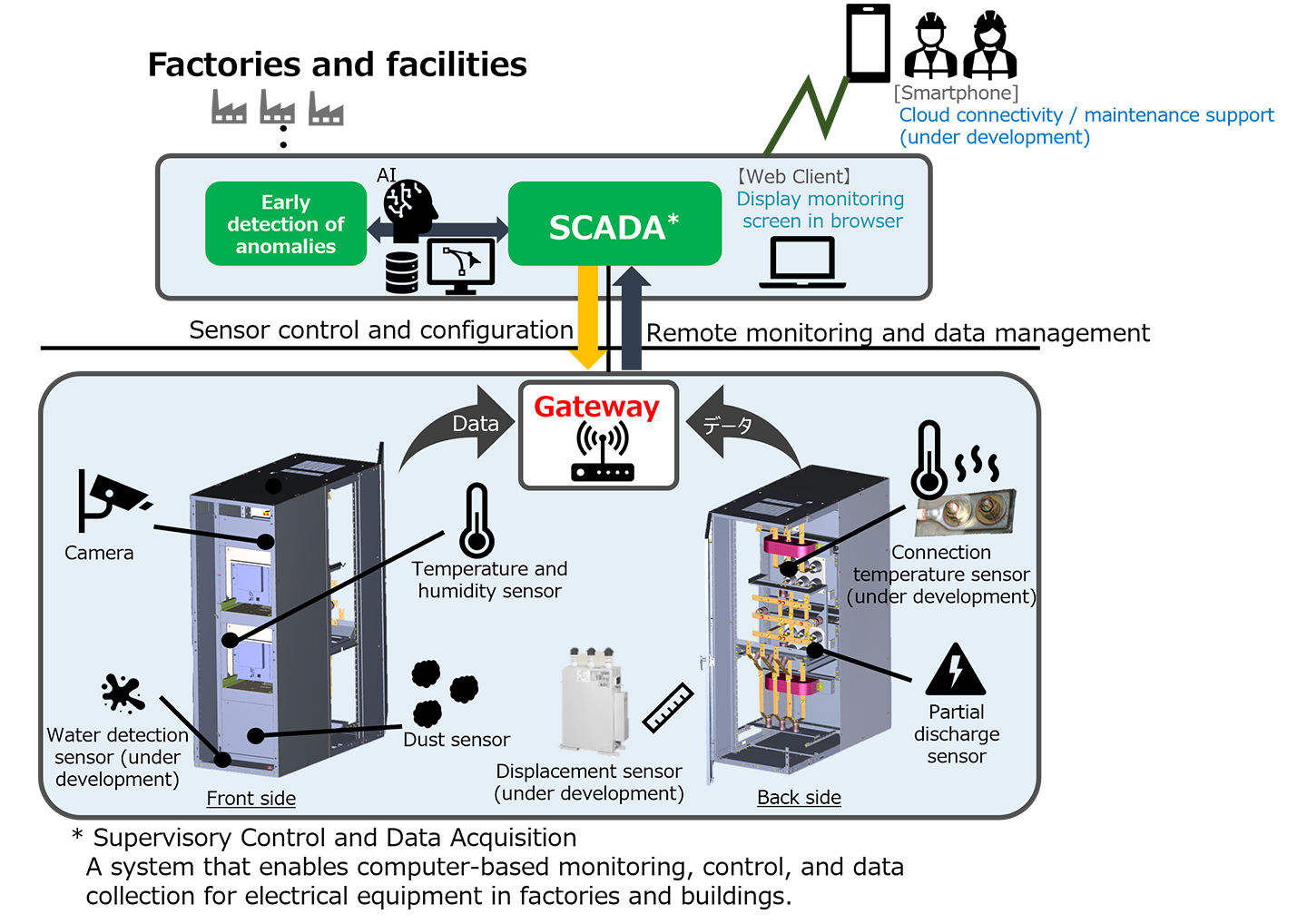
Related link
Advancing a Safe, Secure, and Prosperous Society through Leading Global Environmental Observation
Geostationary Meteorological Satellites Himawari-8/Himawari-9 and Greenhouse Gases Observing SATellite-2 IBUKI-2
The geostationary meteorological satellites Himawari-8 and Himawari-9, equipped with next-generation meteorological observational sensors ahead of other systems worldwide, have significantly enhanced the accuracy of weather forecasting. The data they collect—such as sea surface temperature, phytoplankton concentration, sea ice, and volcanic smoke—also supports disaster prevention efforts across countries and regions in Asia and the Pacific.
In addition, the Greenhouse Gases Observing SATellite-2 (GOSAT-2), known as IBUKI-2, is equipped with high-performance observational sensors that enable precise measurement of greenhouse gas concentration distributions and atmospheric pollution. Through these capabilities, it contributes to global environmental protection and public awareness.
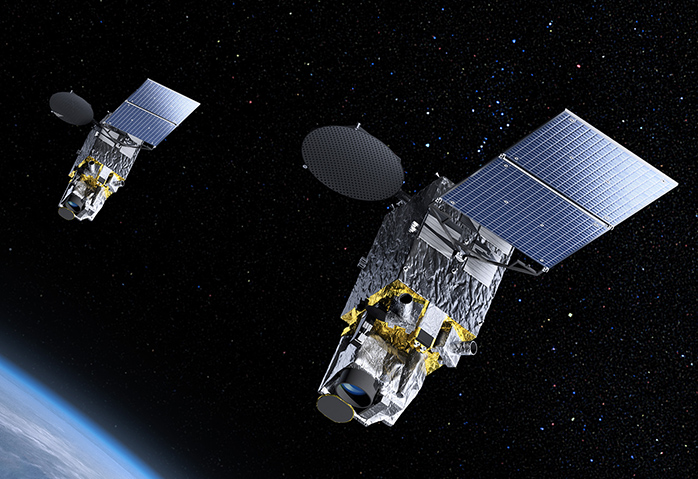 Geostationary Meteorological Satellites Himawari-8/Himawari-9
Geostationary Meteorological Satellites Himawari-8/Himawari-9
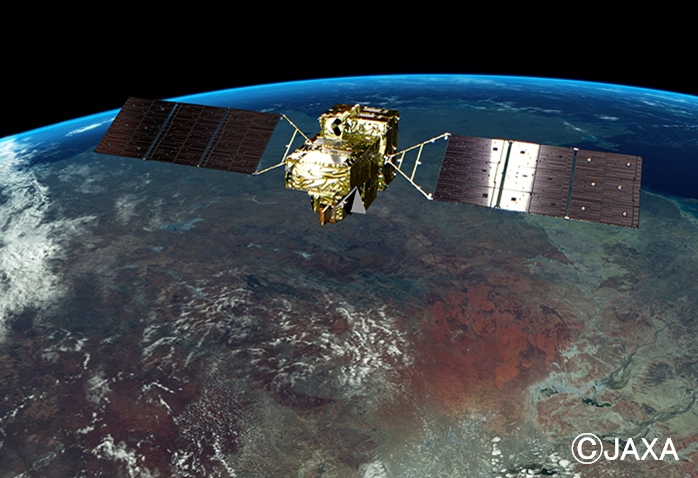 Greenhouse Gases Observing SATellite-2 IBUKI-2 (GOSAT-2)
Greenhouse Gases Observing SATellite-2 IBUKI-2 (GOSAT-2)
Related link
Contributing to Conserving the Global Environment and Ensuring Safe and Secure Living by Using Satellite Observation Data
Satellite Observation Solutions (Advanced Land Observing Satellite-4 DAICHI-4 [ALOS-4] and Advanced Land Observing Satellite-2 DAICHI-2 [ALOS-2])
Mitsubishi Electric possesses a series of technologies from planning satellite observation to processing and analyzing satellite images, which are fully utilized in providing optimal solutions for a customer’s business.
The DAICHI series of advanced land observing satellites serve as part of Japan’s national infrastructure, supporting disaster assessment, land management such as map updates, and monitoring of oceans and forests. In collaboration with national and local governments, we are also advancing technology demonstrations for infrastructure monitoring, contributing to disaster prevention and mitigation efforts, and helping to ensure a safe and secure way of life.
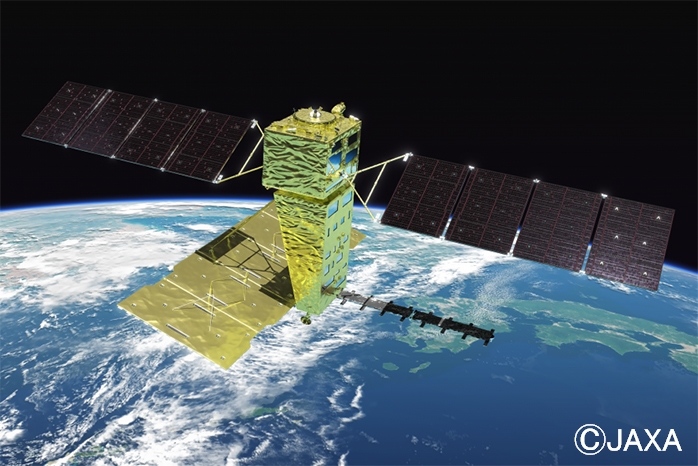 Advanced Land Observing Satellite-4 DAICHI-4 (ALOS-4)
Advanced Land Observing Satellite-4 DAICHI-4 (ALOS-4)
Related link
Contributing to Secure, Safe, and Comfortable Living through High Precision Positioning Solution
Quasi-Zenith Satellite System MICHIBIKI
In the Quasi-Zenith Satellite System MICHIBIKI, one satellite among the four positioning satellites is constantly positioned near the zenith above Japan. This allows positioning signals to be sent to spots where obtaining positioning information was previously difficult. By supplementing GPS signals, it also enables a positioning precision of up to the centimeter-level. By combining positioning data obtained from a high precision positioning terminal and other sources that receive positioning signals from satellites with this service and a high-accuracy 3D map generated from this positioning data, we will help make cities secure, safe, and comfortable for daily life, working in diverse fields including automobiles, railways, agriculture, construction, and civil engineering.
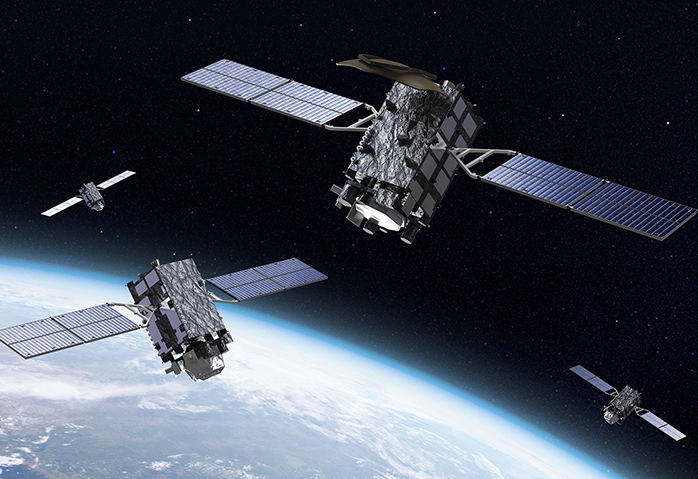 Quasi-Zenith Satellite System MICHIBIKI
Quasi-Zenith Satellite System MICHIBIKI
Related link
